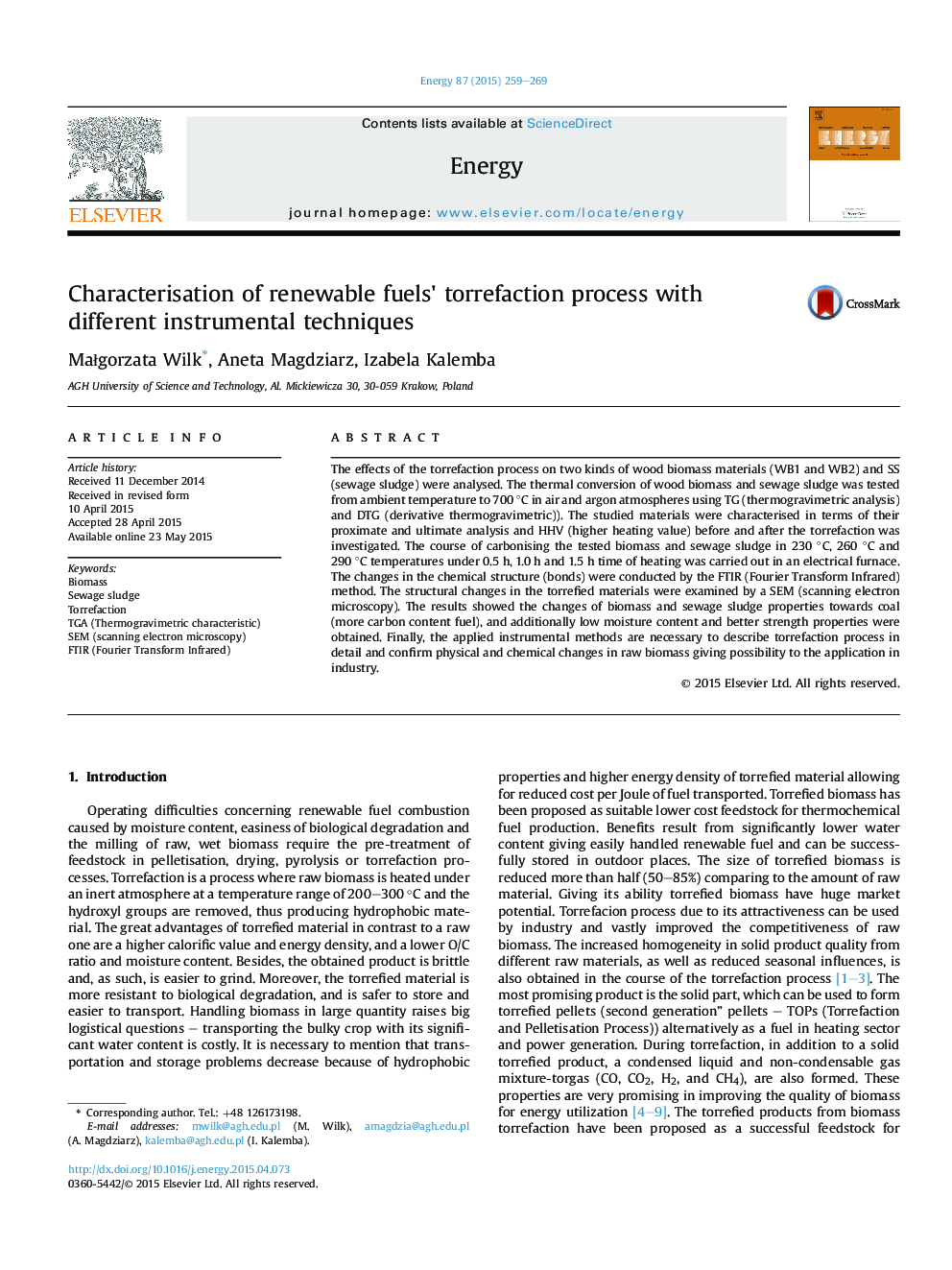| Article ID | Journal | Published Year | Pages | File Type |
|---|---|---|---|---|
| 1731835 | Energy | 2015 | 11 Pages |
•Heterogeneous and homogeneous wood biomass and sewage sludge are investigated.•Effect of temperature and residence time on torrefaction.•Thermogravimetry of torrefied biomass and sewages sludge.•Chemical and structural changes in the torrefied materials.•Homogeneous wood biomass is the most active to torrefaction.
The effects of the torrefaction process on two kinds of wood biomass materials (WB1 and WB2) and SS (sewage sludge) were analysed. The thermal conversion of wood biomass and sewage sludge was tested from ambient temperature to 700 °C in air and argon atmospheres using TG (thermogravimetric analysis) and DTG (derivative thermogravimetric)). The studied materials were characterised in terms of their proximate and ultimate analysis and HHV (higher heating value) before and after the torrefaction was investigated. The course of carbonising the tested biomass and sewage sludge in 230 °C, 260 °C and 290 °C temperatures under 0.5 h, 1.0 h and 1.5 h time of heating was carried out in an electrical furnace. The changes in the chemical structure (bonds) were conducted by the FTIR (Fourier Transform Infrared) method. The structural changes in the torrefied materials were examined by a SEM (scanning electron microscopy). The results showed the changes of biomass and sewage sludge properties towards coal (more carbon content fuel), and additionally low moisture content and better strength properties were obtained. Finally, the applied instrumental methods are necessary to describe torrefaction process in detail and confirm physical and chemical changes in raw biomass giving possibility to the application in industry.
